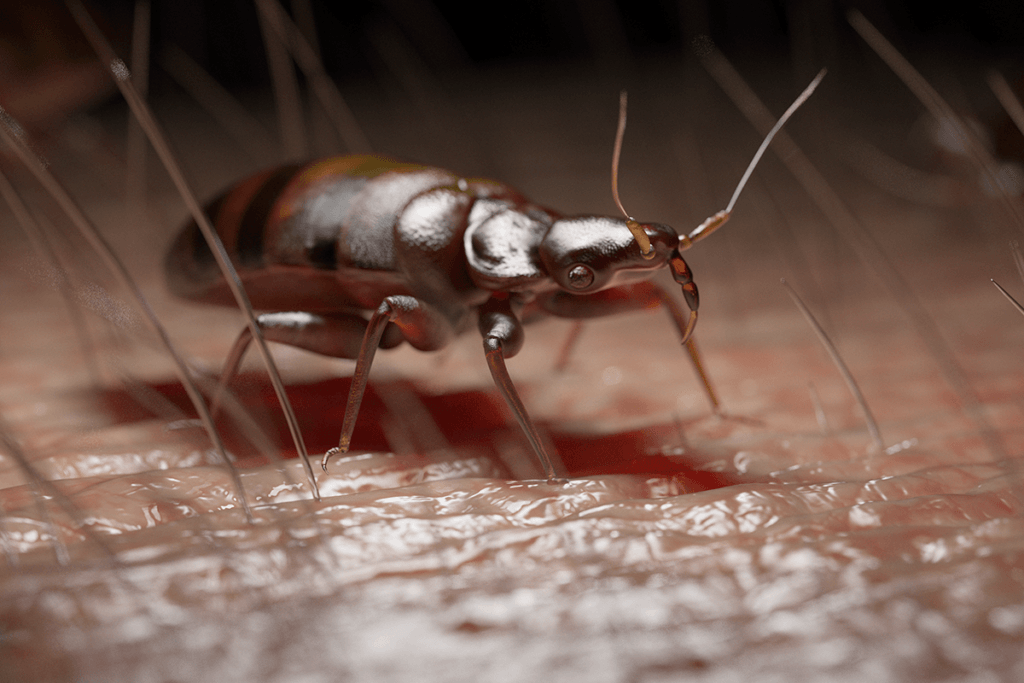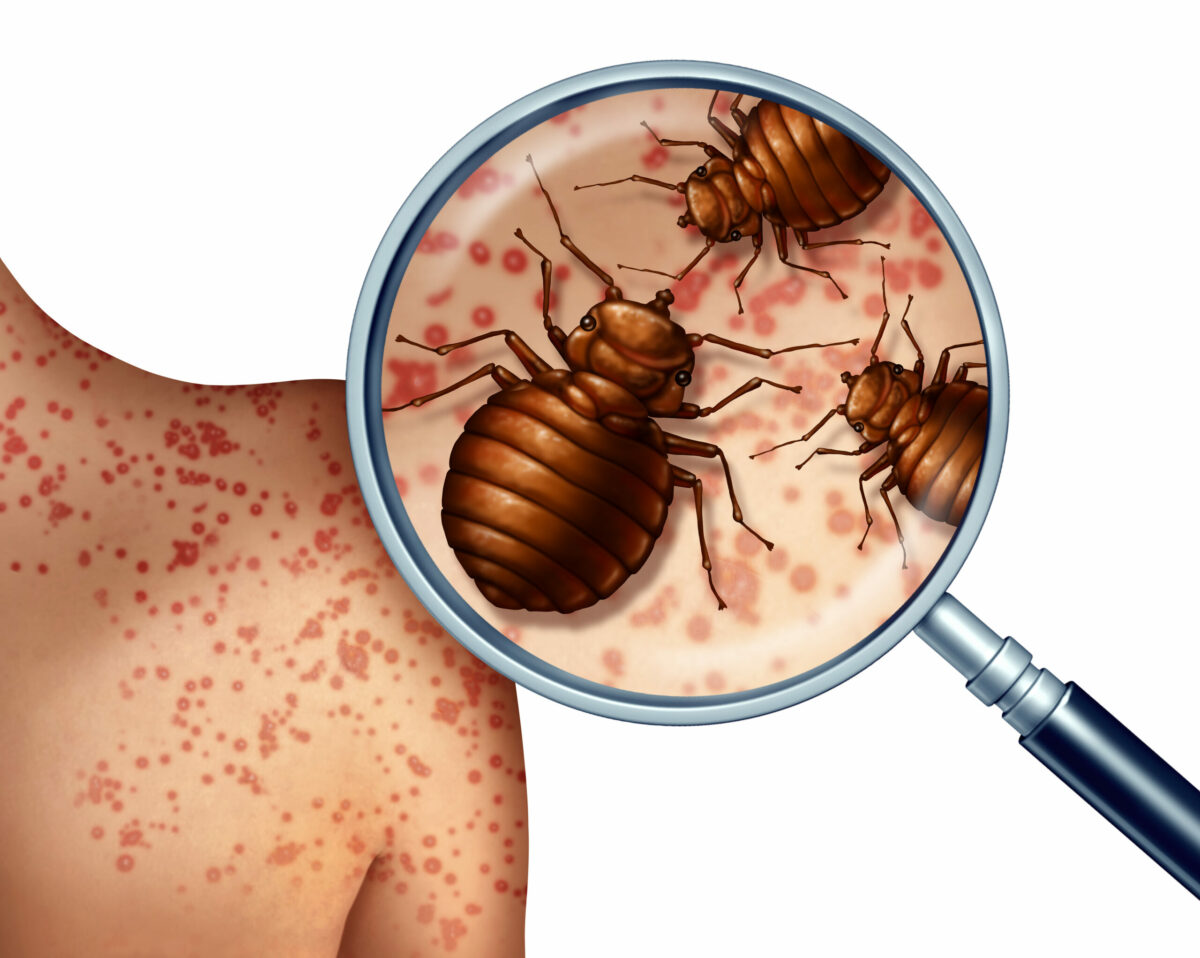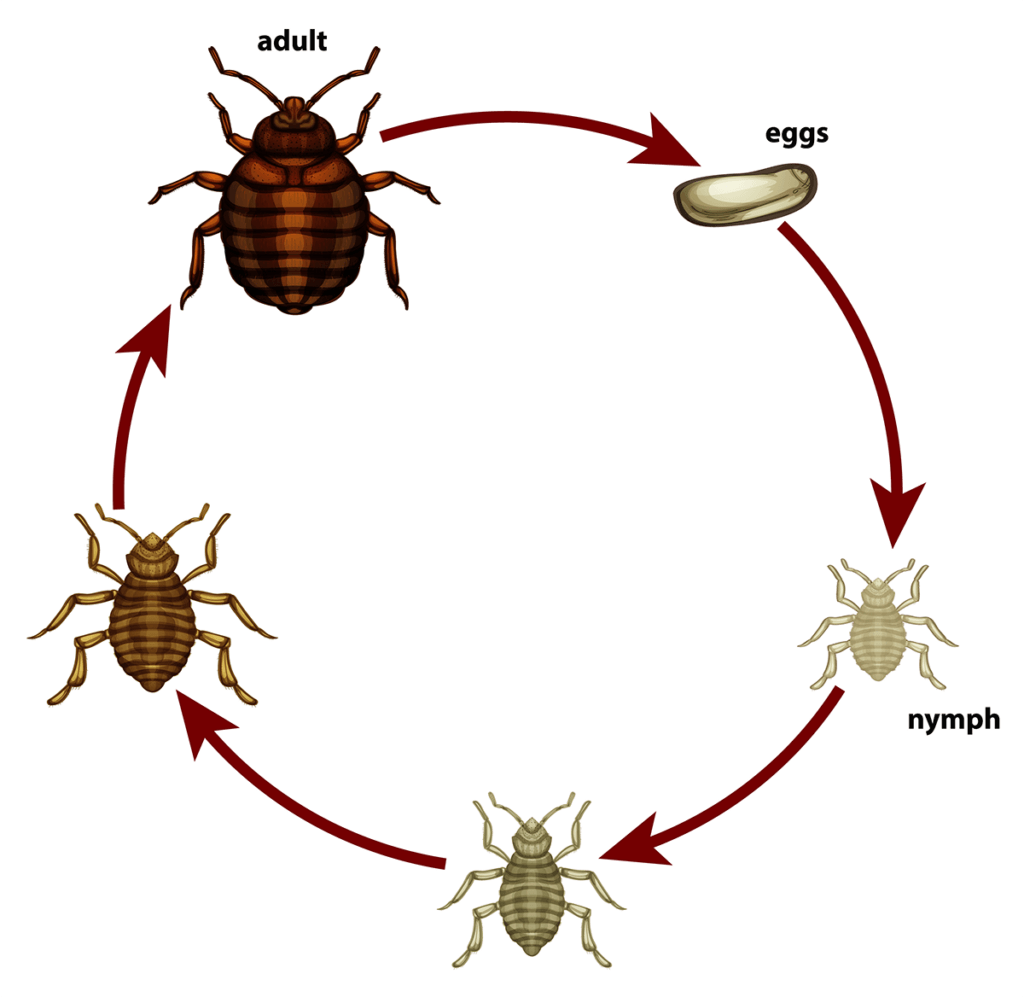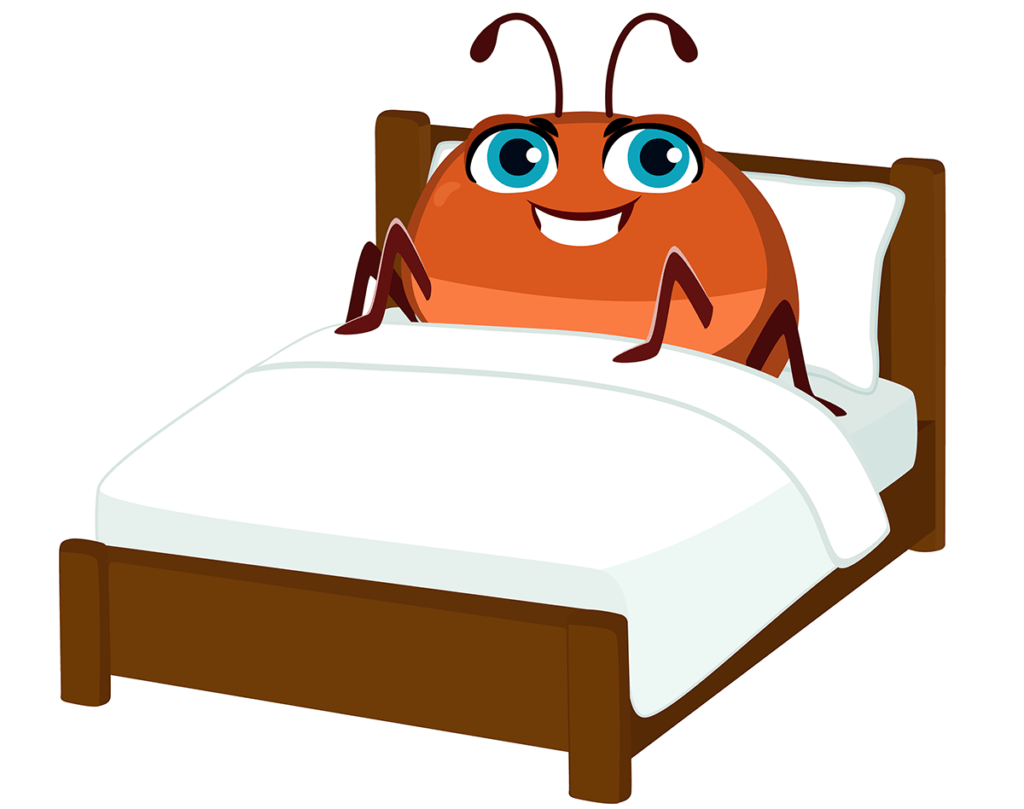Bed bugs are small, reddish-brown insects notorious for their blood-sucking habits, primarily targeting humans as they sleep. These pests are not known to transmit diseases but can cause discomfort and allergenic reactions from their bites. It is essential to understand how bed bugs attack their victims and what signs to look for to prevent potential infestations.
These minuscule insects bite by inserting a beak-like structure into the skin to feed on blood, typically focusing on exposed areas such as the face, neck, arms, and hands. Although the bites might initially go unnoticed, they eventually manifest as red, itchy welts that can last for up to two weeks. By learning the specifics of bed bug bites, individuals become better equipped to identify and address infestations before they become a significant issue.
Detecting bed bug infestations can be tricky, as bite marks may take up to 14 days to develop in some people. Therefore, it is crucial to be diligent and observant for other clues suggesting the presence of these unwelcome visitors. The more information one has about bed bug bites, the easier it is to prevent and control infestations in living spaces.
How Bed Bugs Bite
Feeding Mechanics
Bed bugs feed on human blood by inserting a beak-like structure into the skin. This process usually takes place when people are asleep and lying still, making it easier for the bugs to access exposed skin. Bed bugs tend to target areas such as the face, neck, arms, and hands. After feeding for a few minutes, they become full and detach from the skin to digest their meal Cleveland Clinic.
Anesthetic and Irritant
As bed bugs bite, they inject an anesthetic substance into the skin to prevent the person from feeling pain or discomfort during the feeding process. In addition to the anesthetic, they also release an irritant substance that can cause itching and burning sensations in the affected area. Reactions to these substances can vary, with some people experiencing severe itchiness, while others may not have an immediate reaction CDC.
Identifying a Bed Bug Bite
A bed bug bite can often be recognized by its distinct oval-shaped appearance. The affected area may become red and swollen, and the bites could appear in a random pattern or a straight line on the skin. It is important to note that not everyone will develop visible bite marks, as reactions to bed bug bites can differ from person to person Medical News Today.
Some common signs of bed bug bites include:
- Redness and swelling
- Itchiness or a burning sensation
- Oval-shaped bite marks
- Bites appearing in linear patterns or randomly across the skin
By observing these signs and considering the location of the bites on the body, it is possible to identify a bed bug bite and take appropriate measures to manage the itchiness and prevent further exposure to bed bug infestations.
Symptoms and Treatment
Recognizing the Signs
Bed bug bites often appear as small, red, and itchy bumps on the skin, usually in a linear or clustered pattern. Some people may also develop hives or an allergic reaction around the bite area. Common symptoms of bed bug bites include redness, swelling, and inflammation. It’s important to note that not everyone reacts to bed bug bites in the same way, and some individuals may not experience any symptoms at all.
When to See a Doctor
Although bed bug bites typically clear up on their own within a week or two, it’s important to see a doctor if you experience severe symptoms or signs of an allergic reaction. These can include difficulty breathing, swollen tongue, blisters, fever, irregular heartbeat, or feeling extremely sick. In such cases, seeking medical attention is crucial for proper diagnosis and treatment.
Home Remedies
There are several home remedies that can help alleviate the itchiness and discomfort caused by bed bug bites. Over-the-counter anti-itch creams and calamine lotion can provide temporary relief, while ice packs or cold compresses may help reduce swelling and inflammation. Oral antihistamines, such as diphenhydramine (Benadryl), can also be effective in managing itchiness and allergic reactions.
Prescription Treatments
In cases where bed bug bites cause severe symptoms or complications, a dermatologist may recommend prescription-strength treatments. These can include steroid creams containing hydrocortisone to reduce inflammation and itching, as well as stronger antihistamines for individuals prone to allergic reactions. If the bites become infected, antibiotics may be necessary to prevent further complications. Always follow your doctor’s instructions when using prescription medications to ensure optimal results.
Remember, treating the bites is important, but it’s equally crucial to address the bed bug infestation itself. Consult a professional pest control company or your property manager for assistance in eradicating bed bugs from your home.
Bed Bug Infestations
Identifying an Infestation
Bed bug infestations can occur in various places, including mattresses, furniture, and sheets. One of the easiest ways to identify a bed bug infestation is by the tell-tale bite marks on the face, neck, arms, hands, or other body parts while sleeping. However, these bite marks may take as long as 14 days to develop in some people, so it’s important to look for other signs such as small, reddish-brown droppings and tiny molted skins.
How Bed Bugs Spread
Bed bugs are infamous hitchhikers that can spread from infested areas to new ones through various means, such as:
- Traveling with luggage, clothing, and other belongings
- Stowing away in second-hand furniture or bedding
- Crawling between shared walls in hotels or apartment complexes
Preventing Bed Bug Infestations
Taking precautions can help you prevent bed bug infestations. Some steps include:
- Inspecting mattresses, beds, and furniture while traveling or staying in a hotel room
- Vacuuming luggage and belongings after returning from a trip
- Regularly checking for signs of infestations, such as droppings, molted skins, or live bed bugs in crevices
- Washing and drying bed linens, clothing, and other potentially infested items on high heat
Extermination and Professional Help
If you suspect a bed bug infestation, it’s essential to act quickly to prevent further spread. Some DIY treatments include:
- Vacuuming mattresses and bed frames thoroughly
- Placing infested items in a dryer on high heat for at least 20 minutes
- Freezing clothing or fabric in a sealed bag at temperatures under 32°F (0°C) for at least four days
However, these methods may not be enough to fully eradicate an infestation, so it’s often advised to seek the assistance of a pest control professional or exterminator for thorough inspection and treatment. Proper extermination can help ensure both the complete eradication of bed bugs and effective prevention of future infestations. For help on bed bug inspection, check out our guide HERE.
Bed Bug Life Cycle
Eggs to Nymphs
Bed bugs begin their life cycle as tiny, almost invisible eggs, which are about the size of a speck of dust. These eggs are commonly found in dark, hidden places such as bed frames, headboards, and cracks in wallpaper. A female bed bug lays these eggs, which hatch into nymphs in less than a week, depending on the room temperature (). Nymphs are small, wingless, and typically have a reddish-brown color, making them slightly easier to spot than their transparent eggs.
Adult Bed Bugs
As the nymphs grow, they will shed their exoskeletons in a process called molting. After molting five times, they reach adulthood (). Adult bed bugs have a reddish-brown color, are about the size of an apple seed, and can be found in various tight spaces such as secondhand furniture, headboards, and between mattresses. Despite popular belief, bed bugs do not have wings and cannot fly. Their_flat, oval-shaped bodies allow them to easily hide in cracks and crevices.
Feeding and Reproduction
Bed bugs are nocturnal insects that feed primarily on the blood of humans, although they can also bite animals if necessary. They are attracted to the warmth of our bodies and the carbon dioxide we exhale (). People may notice itchy, red bites on exposed areas of their skin, like the face and hands, but bed bug bites can appear anywhere on the body. Sometimes, these bites may resemble mosquito bites or other insect bites, making them difficult to distinguish.
Feeding is not only essential for the survival of bed bugs, but also for their reproduction. After a successful blood meal, female bed bugs will lay more eggs, continuing the life cycle. It is important for individuals experiencing a bed bug infestation to take immediate action and contact a professional exterminator or inform their landlord. Additionally, it’s good practice to regularly vacuum and clean belongings, which can help minimize the spread of bed bugs.
While cleanliness can help prevent an infestation, it is important to note that bed bugs are not attracted to dirt or grime. Instead, they are attracted to warmth, blood, and carbon dioxide. Therefore, even the cleanest homes can still experience an infestation if bed bugs are unknowingly introduced through items like luggage or secondhand furniture().
In conclusion, understanding the bed bug life cycle is essential to identifying, preventing, and treating an infestation. By monitoring sleeping areas, addressing bites with antihistamines or other remedies to minimize itching and being vigilant about cleanliness, individuals can better protect themselves and their homes from these pesky invaders.
Common Bed Bug Hideouts
Beds and Bedding
Bed bugs are known for their tendency to hide in and around sleeping areas. They are attracted to the warmth of human bodies and the carbon dioxide we exhale. Thus, one of the most common hiding spots for these pests is within mattresses, sheets, and bed frames. Bed bugs can be found hiding in the seams of mattresses, as well as within the folds of sheets and other bedding materials. Regularly inspecting and washing your bedding can help prevent a bed bug infestation in your sleeping area. For more on the topic check out our article about bed bug hiding places.
Furniture and Fixtures
In addition to beds and bedding, bed bugs can also be found on furniture and fixtures around your living space. These pests often hide in the seams, crevices, and joints of furniture, particularly if it is upholstered. They can also make their way into curtains, rugs, and wall decorations. To identify a potential infestation, look for the presence of small reddish-brown bugs, shed exoskeletons, or fecal spots on your furniture and fixtures.
Walls and Flooring
As their name suggests, bed bugs are not limited to beds alone. These pesky creatures can also find shelter in walls and flooring. Cracks and crevices in walls, baseboards, electrical outlets, and carpet edges provide excellent hiding spots for bed bugs. Regularly inspecting these areas, sealing gaps, and vacuuming your floors can help in keeping bed bugs at bay.
Clothing and Personal Items
Another common hiding spot for bed bugs is within clothing and personal items. This is especially true when you’re traveling, as these pests can hitch a ride in your luggage, backpack, or even your clothes. Itchy bed bug bites often appear on exposed skin, like the neck and arms, indicating the presence of bed bugs on your clothing or pajamas. To prevent a potential infestation, wash and dry your clothes on high heat after returning from a trip, and avoid placing luggage on beds or upholstered furniture in hotel rooms.
By being aware of these common hideouts and taking preventative measures, you can protect your home and belongings from bed bug infestations. Remember to regularly inspect your living spaces, wash bedding and clothing, and address any issues you may find to ensure a bed bug-free environment.
Travel and Bed Bugs
Hotels and Accommodations
Bed bugs are known to be expert hitchhikers and they often spread by hiding in items such as furniture, clothing, and luggage. One of the most common places where bed bug infestations can occur is in hotels and accommodations. Bed bugs can crawl into the tiniest crevices between beds, furniture, and even in the fabric of the luggage itself, making it easy for them to travel from one location to another. Because they can live for months without feeding, infestations can go unnoticed for quite some time. As a result, it is important for travelers to be vigilant when staying in hotels and to take precautions to avoid bringing bed bugs home with them.
Cruise Ships
Cruise ships are another common place where bed bugs can thrive. Similar to hotels, bed bugs can find their way into the cabins, lounging areas, and luggage storage on cruise ships. The tight quarters and constant flow of travelers provide the perfect environment for bed bugs to spread from one area to another, creating a risk for all passengers and crew members on board.
Preventing the Spread While Traveling
To prevent the spread of bed bugs while traveling, follow these tips:
- Inspect hotel rooms and cruise ship cabins thoroughly upon arrival, paying close attention to the bedding, headboards, and any furniture nearby.
- Store your luggage on luggage racks or elevated surfaces, away from the bed and upholstered furniture.
- When packing and unpacking, keep your belongings organized and avoid placing clothes, bags, or other items directly on the floor or bed.
- Seal your dirty laundry in plastic bags to prevent bed bugs from hitching a ride home with you.
- Upon returning home, wash and dry all clothing and bedding at the highest heat setting to kill any bed bugs that may have hitched a ride.
Inspecting Your Belongings
If you suspect that you may have encountered bed bugs while traveling, it’s important to inspect your belongings thoroughly before bringing them inside your home. Look for signs of bed bugs, such as small, dark brown insects or tiny black or brown fecal spots. If you find any evidence of bed bugs, it’s important to take immediate action to prevent an infestation in your home. This may involve contacting a professional pest control company or taking other measures, such as washing and drying all affected items at high temperatures.
If you experience itchy bed bug bites while traveling, it’s important to seek medical advice from a doctor. In the meantime, you can relieve some of the itchiness by applying soap and water to the affected area. Remember, preventing bed bug infestations while traveling is essential to keeping these pesky critters out of your home and avoiding itchy bed bug bites altogether
Q&A
Q: What does a bedbug bite look like?
A: Bedbug bites usually look like small red welts, similar to mosquito or flea bites. They may appear in a cluster or in a line and are often itchy. However, some people may have no visible signs of bites at all.
Q: How do you treat bedbug bites?
A: To treat bedbug bites, wash the bites with soap and water to prevent infection and soothe itchiness. Over-the-counter creams and antihistamines can also be used to reduce itching and discomfort. If the bites don’t improve after a week or become infected, seek medical advice.
Q: Where are bed bugs found in the home?
A: Bed bugs are found in places where people sleep or spend a lot of time. They hide during the day in places like the seams of mattresses, box springs, bed frames, and even behind wallpapers. They can also be found in appliances, furniture, and clutter.
Q: How do you get rid of bedbugs in your home?
A: To get rid of bedbugs, you can use a combination of cleaning, heat treatment, and insecticides. It’s also critical to clean all bed sheets, curtains, and clothes in hot water and dry them on the highest dryer setting. Professional pest management is often required for severe infestations.
Q: How do bedbugs differ from fleas or bat bugs?
A: Although similar in appearance, bed bugs, fleas, and bat bugs have some differences. Bedbugs feed on human blood while fleas usually attach to pets. Bat bugs, on the other hand, are often found in attics or places where bats live. Unlike bedbug bites, flea bites and spider bites usually have a red spot in the center.
Q: How do you kill bed bugs effectively?
A: To kill bed bugs, a combination of chemical and non-chemical treatments are often used. This may include insecticides, vacuuming, heat treatment, or cold treatments. Pest management professionals can also use specialized equipment such as bed bug detection dogs to find bed bug populations and treat the infestations.
Q: How can you prevent bed bugs?
A: Bed bug control involves regular inspection of your home, especially the places where bed bugs live and hide. Using protective covers on your mattresses and box springs can prevent bed bugs and their eggs from infesting your bed. Regular cleaning of your home and belongings is also a crucial part of prevention.
Q: Do bedbugs pose a health risk?
A: Although bedbugs are not known to spread disease, their bites can cause discomfort, sleep disturbances, stress, and allergic reactions in some people. In severe cases, the bites can lead to secondary skin infections.
Q: Can bedbugs travel from one place to another?
A: Yes, bed bugs are skilled hitchhikers. They can travel easily in luggage, clothing, used furniture, or other items. This is why it’s important to inspect items for signs of an infestation before bringing them into your home.
Q: What are the common signs of a bed bug infestation?
A: Signs of an infestation include finding live or dead bed bugs, their eggs or shells, and dark spots of bed bug excrement on bed sheets or mattresses. Also, a sweet musty odor may be detected in severe infestations. Confirmation of an infestation should always be done by a pest management professional.



































